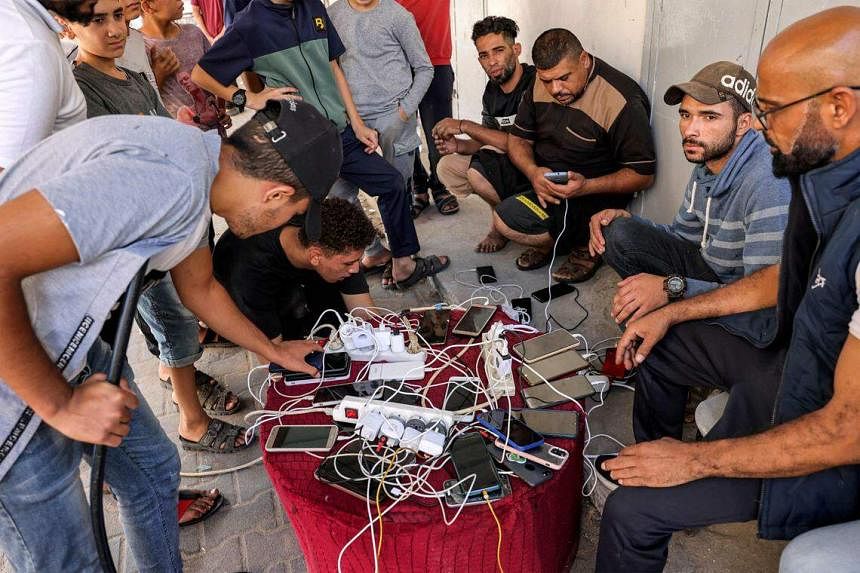RAFAH, Palestinian Territories - Power cuts have become a fact of life in war-torn Gaza. But thanks to embedded SIM cards, or eSIM cards, Palestinians can still access the Internet and maintain a channel of communication with loved ones abroad.
“Without them, we’d be cut off from the world,” said Mr Hani al-Shaer, a local journalist who depends on eSIM cards to do his live streaming.
“And no one would know what was happening in Gaza,” he added, just as the besieged territory on Dec 26 experienced the latest in a series of telecommunications breakdowns since the war began.
The war erupted after the Hamas attack on Oct 7 killed around 1,140 people in Israel, most of them civilians, according to an AFP tally based on the latest official Israeli figures.
Vowing to destroy Hamas, Israel has led a massive air and ground campaign against the Palestinian militants in retaliation.
The offensive has left vast areas of Gaza in ruins and killed at least 20,915 people, mostly women and children, according to the Health Ministry in the Hamas-run territory.
The Human Rights Watch has warned that phone and Internet disruptions in Gaza could “provide cover for atrocities and breed impunity, while further undermining humanitarian efforts and putting lives at risk”.
The idea behind the eSIM is simple: they are a software version of the chips traditionally inserted into phones to connect to cellular networks and the Internet.
Embedded directly into a device, they can be activated using a QR code, which Gaza residents receive from family members living abroad.
The Gaza residents are then able to connect in roaming mode to a foreign network – often an Israeli one or sometimes Egyptian.
The eSIM has been a godsend, said Ms Samar Labad.
The 38-year-old fled her home in Gaza City for the south, where tens of thousands of displaced Palestinians have been living in makeshift camps.
Now in Rafah, she had lost contact with her family for over a week. But then her brother – who lives in Belgium – sent her an eSIM.

“The connection is not stable, but it does the trick,” she said. “At least we can stay in touch to reassure each other, even if intermittently.”
She also has loved ones in Khan Yunis.
“I find out how they’re doing from someone who lives with them, whose phone is eSIM-compatible,” she said.
Service is only available in areas near the border with Israel. Otherwise, you have to climb up to the roof to catch a signal.
Search for victims
Mr Ibrahim Mukhaimar, who owns a mobile phone store, said his main customers are journalists who use eSIMs to provide the outside world with an accurate account of the situation in Gaza.
He said they vitally communicate “that there is a lack of basic items necessary for survival” in the besieged territory.
His eSIM customers also include “doctors and civil defence employees who are looking to learn the exact location of strikes in order to help people”, Mr Mukhaimar said.
Employees of the United Nations agency for Palestinian refugees, UNRWA, also use them to organise aid convoys.

While the cards help offset telecoms outages, Internet access is required to activate them in the first place.
The price varies from “15 to 100 dollars, depending on how long they’re valid for”, said video journalist Yasser Qudieh.
He added that local journalists with eSIMs end up serving as messengers for others.
The other journalist, Mr Shaer, said that “many expats get in touch with us to follow the latest news from Gaza and get information regarding their families”. AFP

